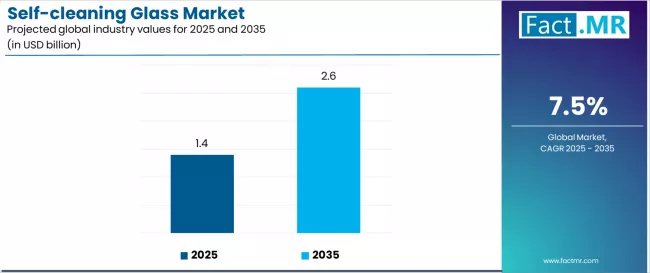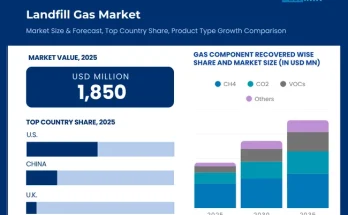Self-cleaning glass has emerged as a game-changer in the construction and building materials sector, providing both aesthetic appeal and functional efficiency. Designed with special coatings that repel water, dust, and organic contaminants, self-cleaning glass reduces maintenance needs while enhancing transparency and durability. As urbanization accelerates and sustainability becomes a core focus in building design, self-cleaning glass is gaining significant attention from architects, developers, and facility managers worldwide. Its adoption reflects a broader trend toward low-maintenance, energy-efficient, and environmentally friendly building solutions.
Market Overview:
Self-cleaning glass includes hydrophobic and photocatalytic types, each designed to address specific cleaning and maintenance challenges. Hydrophobic glass repels water, preventing dirt accumulation and streak formation, while photocatalytic glass uses a chemical reaction triggered by sunlight to break down organic matter. These innovative solutions are being increasingly incorporated in high-rise buildings, commercial complexes, and residential projects. The market continues to grow as stakeholders prioritize materials that combine functionality, longevity, and sustainable practices.
Regional Insights:
Adoption of self-cleaning glass varies across regions. Asia-Pacific is emerging as a leading market, driven by rapid urbanization, large-scale infrastructure projects, and increasing awareness of sustainable construction practices. North America maintains strong demand due to advanced technological capabilities and stringent building codes promoting energy-efficient and low-maintenance materials. Europe is witnessing steady adoption, supported by a combination of environmental regulations and high-end architectural trends. Emerging markets in Latin America and the Middle East are gradually integrating self-cleaning glass into modern construction projects, reflecting growing global interest.
Key Trends & Forecast:
Several trends are shaping the self-cleaning glass market. The integration of advanced nanotechnology in coatings is enhancing cleaning efficiency and durability. Sustainable construction practices are driving the demand for low-maintenance and energy-saving materials. Collaborations between glass manufacturers and construction firms are fostering innovations tailored to architectural aesthetics and functional requirements. Smart glass solutions, which combine self-cleaning features with energy-efficient glazing, are also gaining traction in modern building designs. Overall, the market is expected to grow steadily as technology and environmental priorities intersect.
Applications & End-Use Outlook:
The building and construction sector represents the primary end-use segment for self-cleaning glass. Commercial high-rises, shopping malls, airports, and hospitals are increasingly using self-cleaning glass to reduce maintenance costs and improve building aesthetics. Residential projects, particularly luxury apartments and villas, are incorporating self-cleaning glass for windows, skylights, and facades to enhance convenience and visual appeal. Beyond construction, self-cleaning glass is finding applications in solar panels, automotive windows, and specialized equipment where maintaining transparency is critical. Its multifunctionality and low-maintenance properties make it an attractive choice across diverse applications.
Drivers of Market Growth:
The growth of the self-cleaning glass market is driven by several factors. Rising awareness about maintenance-free building materials and operational efficiency encourages adoption in commercial and residential projects. Environmental regulations promoting sustainable construction practices further boost demand. Technological advancements in coating methods and material durability allow manufacturers to offer highly effective and long-lasting products. Additionally, the rising construction of smart buildings and energy-efficient infrastructure worldwide is creating significant opportunities for self-cleaning glass adoption.
Challenges and Restraints:
Despite its advantages, the self-cleaning glass market faces certain challenges. High initial investment costs compared to conventional glass can limit adoption in cost-sensitive projects. Variations in climatic conditions, such as limited sunlight in certain regions, can reduce the efficiency of photocatalytic coatings. Technical expertise is required for installation and maintenance, particularly for large-scale applications. Addressing these challenges requires innovation in cost-effective production, tailored solutions for diverse climates, and awareness campaigns highlighting long-term benefits.
Future Outlook:
The future of the self-cleaning glass market looks promising. Continuous technological innovation in coating materials and integration with smart building solutions is expected to enhance performance and adoption. Increasing urbanization and demand for sustainable, low-maintenance buildings will further drive market growth. Manufacturers are likely to invest in research and development to create multi-functional, energy-efficient glass products that meet both regulatory standards and consumer expectations. As industries recognize the long-term operational benefits and environmental advantages, self-cleaning glass is set to become a staple in modern architecture and sustainable infrastructure projects.
Conclusion:
Self-cleaning glass represents a perfect combination of innovation, convenience, and sustainability, addressing modern construction needs while reducing maintenance efforts and operational costs. The market’s growth is supported by technological advancements, regulatory frameworks, and increasing adoption in commercial, residential, and specialized applications. By understanding market trends, regional dynamics, and evolving applications, stakeholders can leverage opportunities in this expanding sector. As urban development and sustainability goals continue to shape the future of construction, self-cleaning glass will play a pivotal role in creating aesthetically pleasing, efficient, and environmentally responsible buildings worldwide.
Browse Full Report – https://www.factmr.com/report/self-cleaning-glass-market



